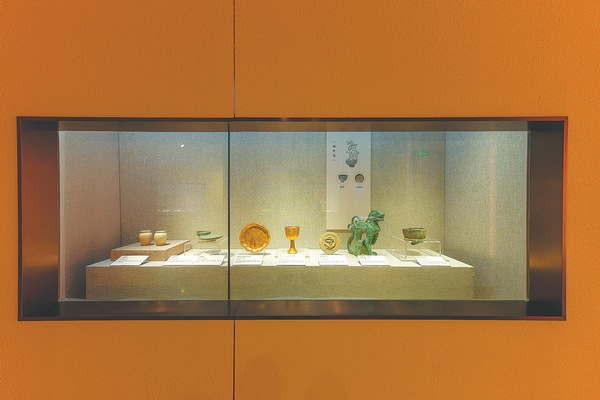

Ding said the Jin Dynasty mausoleum system, in which imperial tombs were built on mountains near the capital, followed the shape and structure of those from the Tang (618-907) and Song (960-1279) dynasties.
The layout of the mausoleums is also evidence of the merging of Jurchen and Han culture, Ding said.
She added that due to the relocation of the capital and imperial mausoleums, a large number of Jurchen nobles and warriors, along with people from minority groups such as the Bohai and Khitan, came to Zhongdu to promote cultural exchanges among different ethnic groups.
In the 120-year history of the Jin Dynasty, its capital city was relocated twice. When Wanyan Liang, the fourth Jin Dynasty emperor, ascended the throne, he moved the dynastic capital to Yanjing (present-day Beijing) in 1153, from the northeastern city of Shangjing (now Harbin, capital of Heilongjiang province). Zhongdu was also chosen by the emperor as the dynastic capital due to its abundant resources and well-connected transportation links.
Before the Jin Dynasty, most capitals of ancient Chinese dynasties were located in Luoyang, Henan province, or Xi'an, Shaanxi province. Earlier than this, Erlitou and Yinxu in Henan were capitals during the Xia and Shang dynasties (c. 21st century-11th century BC).
The book Current Affairs of Beijing, written during the reign of Emperor Qianlong (1711-99) during the Qing Dynasty (1644-1911) states: "Starting from ancient times, emperors have established their capitals in many places (across China). For a long time, only the plain in central Shaanxi was favored by them as a capital. Now, only Yanjing is comparable, and has been considered a capital city for an extended period."
Beijing, initially founded as Ji, capital of the Yan state during the Western Zhou Dynasty (c. 11th century-771BC), was only a border town in the northern region of China in the Tang Dynasty and the southern capital during the Liao Dynasty. It became known as Zhongdu in the Jin Dynasty, and acted as the nation's political and cultural center.
Kublai Khan, founder of the Yuan Dynasty, renamed Zhongdu as Dadu ("great capital") and declared it the national capital.
In 1403, Zhu Di, also known as Emperor Yongle, the third emperor of the Ming Dynasty (1368-1644), decided to relocate the capital from Nanjing to Beiping, and renamed the latter Beijing.
In 1644, Emperor Shunzhi, the first emperor of the Qing Dynasty to enter Beijing, moved the capital from Shengjing (now Shenyang in Liaoning province) to Beijing.